In the caveman days of the 1960s, high-speed rail was pretty much just finding a way to match the performance of trains pulled by steam locomotive fleets. Except at the New York Central.
The management was thinking out of the box, and all the synapses were firing when they came up with a capital-letter Big Idea of uniting a jet engine with a Budd Rail Diesel Car.
But far from it being “What were they thinking?” it was a creative approach to running some tests scoping out the effects of high-speed trains on track, roadbed, and rolling stock. It also created a public relations sensation
without having to spend a bazillion dollars or so to make a totally new train like the United Aircraft TurboTrain or the Metroliner electric.
The Central’s Cleveland Technical Center was given 45 days to put the program together. For the road equipment, the team decided to use a Budd car (a Phase I RDC-3 with side doors, borrowed from commuter duties on the railroad’s Hudson Division).
Most of the installed equipment was removed to make room for sensors and technical equipment, such as video cameras, tape recorders, and direct-writing oscillographs, to document the cars’ every movement during the test runs.
Motive power wouldn’t be the Budd car’s diesel – but two General Electric J47 jet engines in a nacelle from a B-36 bomber. This was mounted on the forward end of the car, above the engineer. The Center’s backshop fabricated and installed a slanting nose reminiscent of the snout of the Commodore Vanderbilt.
This was to assist the brick-like aerodynamics of the Budd car in helping the air flow up and over the top toward the engines.
The target for the test was a length of straight track between Butler, Ind., and Stryker, Ohio. The surface was
largely made up of quarter-century-old 39-foot track sections and a much shorter distance of welded rail.
When the series of tests began, each grade crossing was manned by Central employees and there was a major law enforcement presence. An airplane flew the entire route and was in direct communication with the engineer.
The jet-powered RDC set a rail landspeed record of 183.8 miles per hour and provided ample data to suggest that high-speed trains could run safely on a conventional right-of-way.
The M-487 was returned to local service, and the jet engines were later used in tests creating the famed New York Central jet-powered snow blowers.
Opening the box
I will confess that when I opened the box, the “cool” factor rivaled the rush I experienced when first examining the Lionel Phantom and the MTH Centipede. This was something I didn’t think I’d ever see in O gauge and it looks pretty darned cool.
What we have is a basic Lionel RDC car with some nice modifications. The body style doesn’t quite match the real M-497, nor is the length of the car that close, but Lionel receives high points for trying to introduce a new model of a notable train while keeping costs low enough so the model can be included in many tight train budgets.
The most obvious addition to the basic RDC is the dark gray, wedgeshaped nose. If you flip the RDC over on its back, you can see the regular face of the Budd car behind the wedge.
The wedge is held on by screws connecting from inside the car itself. The furthest point of the wedge protrudes nearly 2 inches from the frame of the RDC. Two slots are cut into the sides of the wedge for crew visibility, and the operator can install a red plastic add-on pitot tube.
The tooling is, of course, basic. The extrusions of the car are all clean and crisp. There are nine full windows and one small window on each side of the model. Virtually all the detailing is cast in. There are cast-in grab irons leading to the roof on alternating sides. The roof has an add-on horn and a dome housing two cast-in exhaust fans and four see-through screens.
From the tip of the red front nose cone to the rear of the engine support, the jet engine is 45⁄8 inches long.
The RDC has one thumbtack coupler mounted on the rear of the car.
The die-cast metal trucks are nice renderings that are cleanly made and neatly painted. Side panels serve to hide the speaker and underbelly controls. The silver paint of the RDC is accented by the dark gray striping that originates on the nose. Dark gray is the background color for New York Central, the car number, and the New York Central System herald on the nose and both of the car’s sides.
All the graphics were applied neatly.
On the test track
Let’s be up front about this. The first few hours after I opened the box were a less-than-happy experience.
After I greased the gears, I put the RDC on the track. The sounds kicked in. The lights came on. Then I discovered it would run in reverse only.
Yes, I did all sorts of permutations of changing power supplies and having the directional lock switch in different positions to no avail.
So let me give a tip of the hat to Matt and Jack at Sommerfeld’s Trains in Butler, Wis., for swapping out the main board while I waited! That little bit of unpleasantness aside, the remainder of the testing process was a delight.
Hitting the old reset button, I started over. Apply track power and you’ll get a nice surprise – the sound of a jet
engine. This is a pretty dominating sound that makes the point that this isn’t your typical piece of O gauge
model railroad equipment.
Oddly, there are no horn or bell functions, though cataloged.
The model is conventional-only and has a single Pullmor motor mounted over the front truck.
The powered truck has a single power pickup roller, but the unpowered truck has two pickup rollers, which create a pickup footprint of 10 inches.
The powered truck has two traction tires as well as Magne-Traction (it passed the paperclip test) and delivered
1 pound of drawbar pull (it can pull some fast freight!).
And yes, the motor does generate the neat postwar-style ozone smell.
The motor is a bit noisy – what I’d call “postwar grindy good” – but ran very smoothly. Since this is a conventional-only model, it delivered a lowspeed average of 14.1 scale mph and a high-speed average of 91 scale mph.
The interior is illuminated, but the windows are filled with frosted plastic panels to hide the interior. The coolest illumination factor, though, is that the jet engine exhaust cones glow red.
Lionel did a good job creating an interesting product at minimal expense. The model looks and sounds different, and is affordably priced enough to get even me to dip into my supply of ducats to get one. And no, I don’t plan on making this the source of special operations. It will merely join my Aerotrain, heavyweights, and 20th Century Limited set in passenger service.
Price: $299.99 (no. 38401)
Features: O-36 operation, Pullmor
motor, Magne-Traction, jet sound
effects, operating coupler.
O gauge jet-powered
RD C car by Lionel The M-497 features a glowing exhaust on
the General Electric jet engine mounted
on the front of the Budd car.
Suggesting the title “The Train in the Iron
Mask,” the jet-powered RDC features a
wedge nose, pitot tube, and jets lifted
from a 10-engined B-36 bomber. The
windows on the M-497 were actually
number boards from a diesel locomotive.
The thick glass was to prevent problems in
case of a bird strike.
Features: O-36 operation, Pullmor motor, Magne-Traction, jet sound effects, operating coupler.





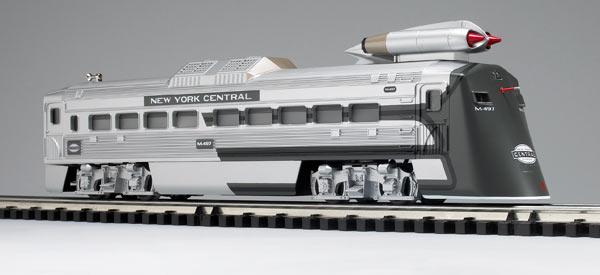

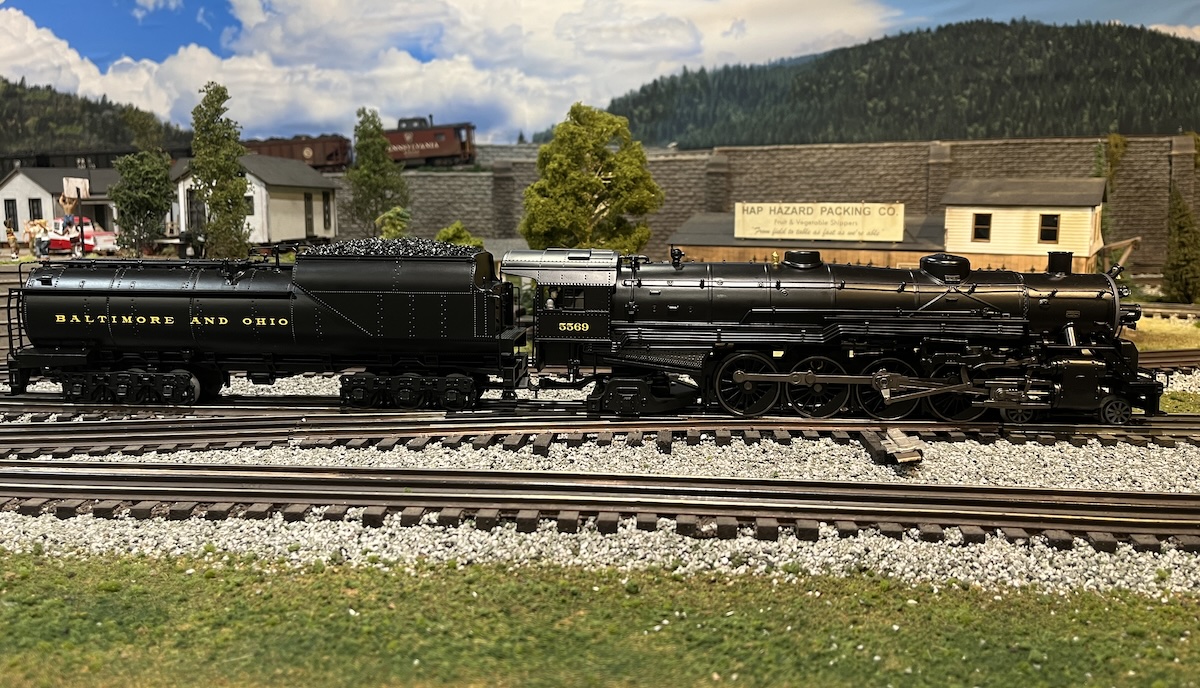
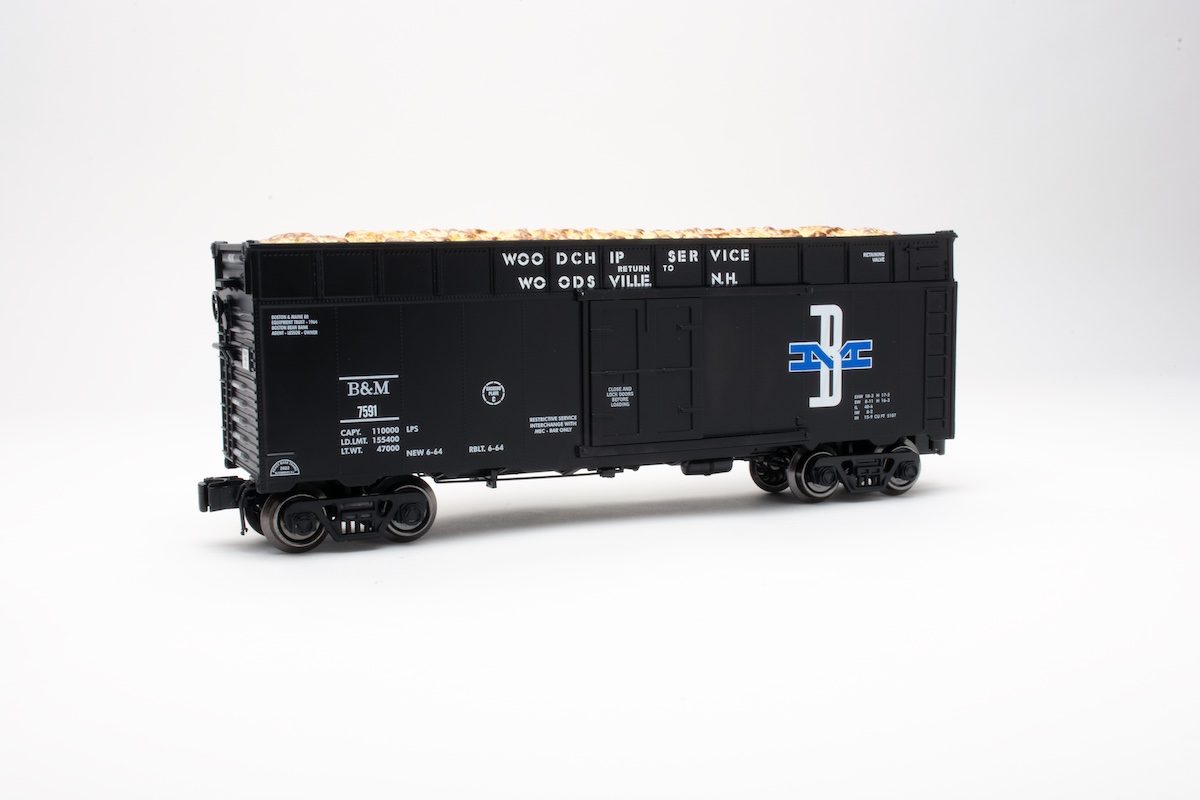
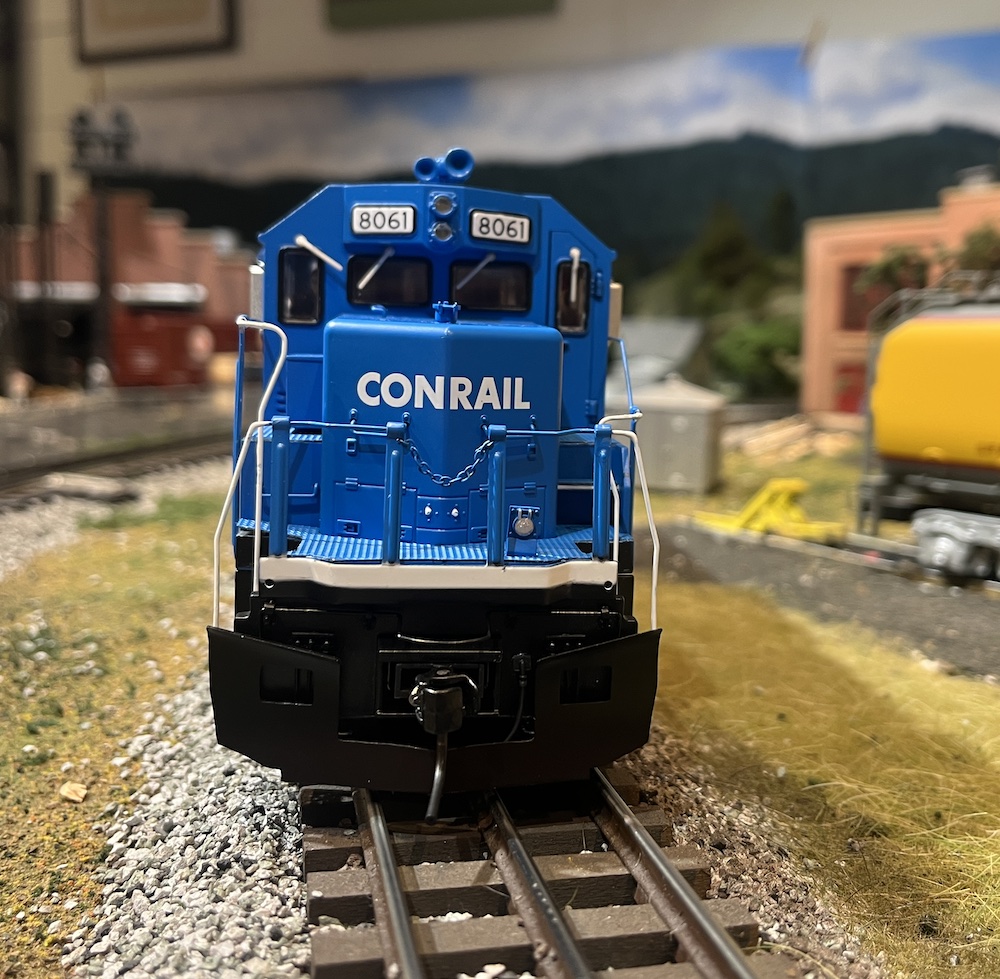
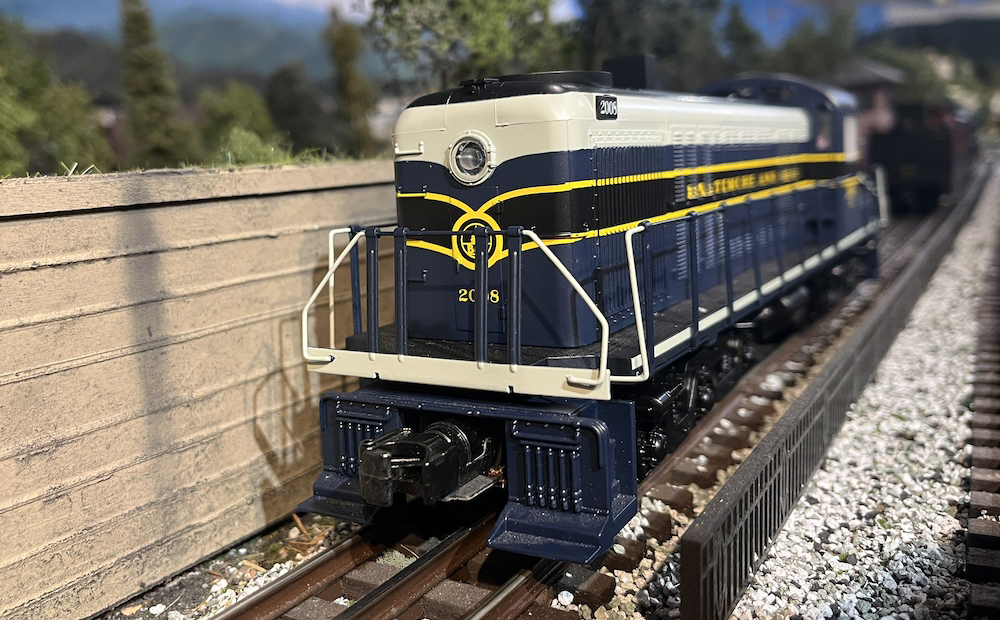




I just purchased the Rock Island Rocket version (May 2014) and really like this piece. It is very interesting and unique. And it can really fly (around the track that is). The Rock Island paint scheme is really well done and graphics are crisp and sharp. As stated in Bob's review the motor is noisey and at times sort of drowns out the jet engine, but really not by much. I like it enough that I am considering getting the NYC version too.